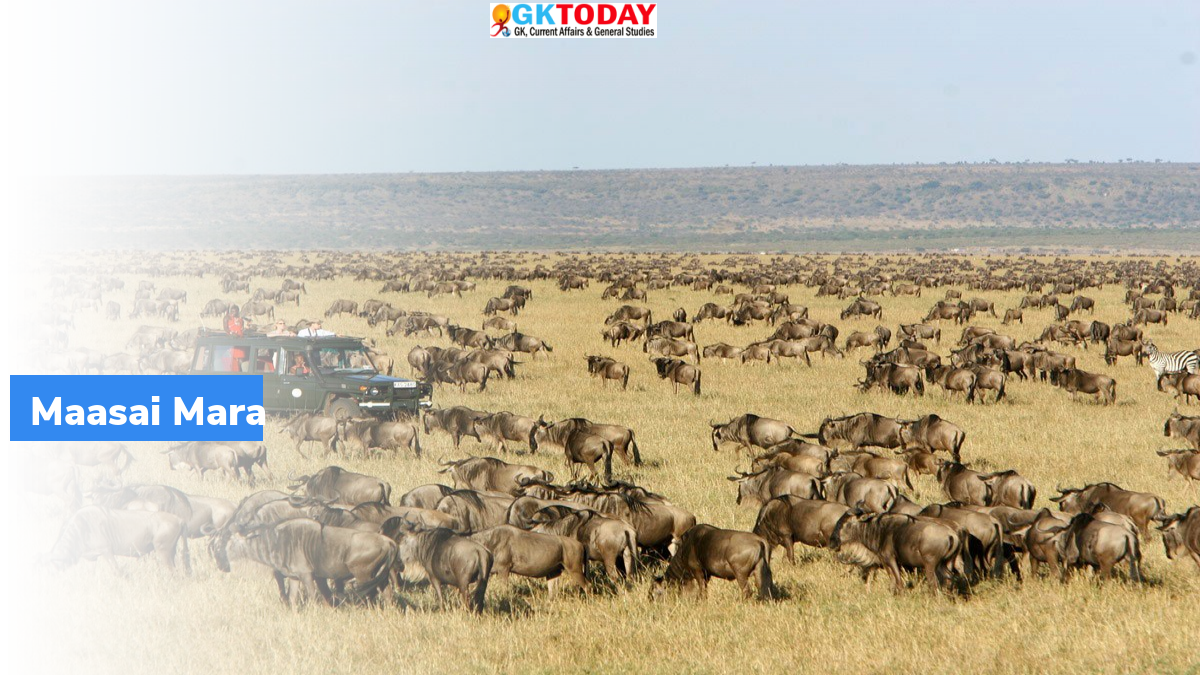Maasai Mara
The Maasai Mara is also called Masai Mara or simply Mara. It is a large game reserve in Kenya. Game reserve is the region where the wild animals are hunted in a controlled way. If hunting is prohibited, the game reserve becomes nature reserve.
About Maasai Mara
The Maasai Mara is in contiguous with the Serengeti National Park of Tanzania. The game reserve is named after the Maasai people. Maasai are the ethnic tribal group inhabiting northern Tanzania and southern Kenya. They migrated from the Nile basin. Mara means “spotted” in Maasai language. It is called Maasai Mara due to the short bushy trees that dots the landscape here and there.
Specialty of Maasai Mara
The Maasai Mara is the most important wildlife conservation in Africa. It is known for its exceptional population of African leopard, lion, cheetah, African bush elephant. It hosts the Great Migration. The Great Migration has made Maasai Mara one of the ten wonders of the world.
The Great Migration in Maasai Mara
Every year migration of wildebeest occurs around the same time in this region. This is called Great Migration. The migration is based on the availability of grazing. It begins in the Ngorongoro conservation area of the southern Serengeti in Tanzania. From there, they loop clockwise and move through the Serengeti National park and then to the Maasai Mara reserve in Kenya. This migration occurs naturally. The wildebeest move based on the available fodder. From January to March, the calving season begins and there is plenty of rain-ripened grass. During this period, around 500,000 calves are born in just 2 to 3 weeks. As the rains end, they move towards the Grumeti river and remain there till June. They then arrive in Kenya in July or August. In November, they then move south.
Diversity
The Maasai Mara is highly rich in biodiversity. It is home to more than 3,000 lions, 8,000 hyenas, 1,000 leopards. There are cape buffalos, African wild dogs, warthog, African elephant, waterbuck, eland and topi.
Conservation
The Kenyan and Tanzanian Governments maintain most of the protected areas of the region. Around 80% of Serengeti is legally protected. Also, the region is home to the Ngorongoro Conservation Area. This has the Olduvai Gorge and Ngorongoro crater. Also, some of the oldest hominin fossils are found here.
Climate
The climate in the region is warm and dry. Rainfall occurs in two rainy seasons. They are from March to May and from October to November.


